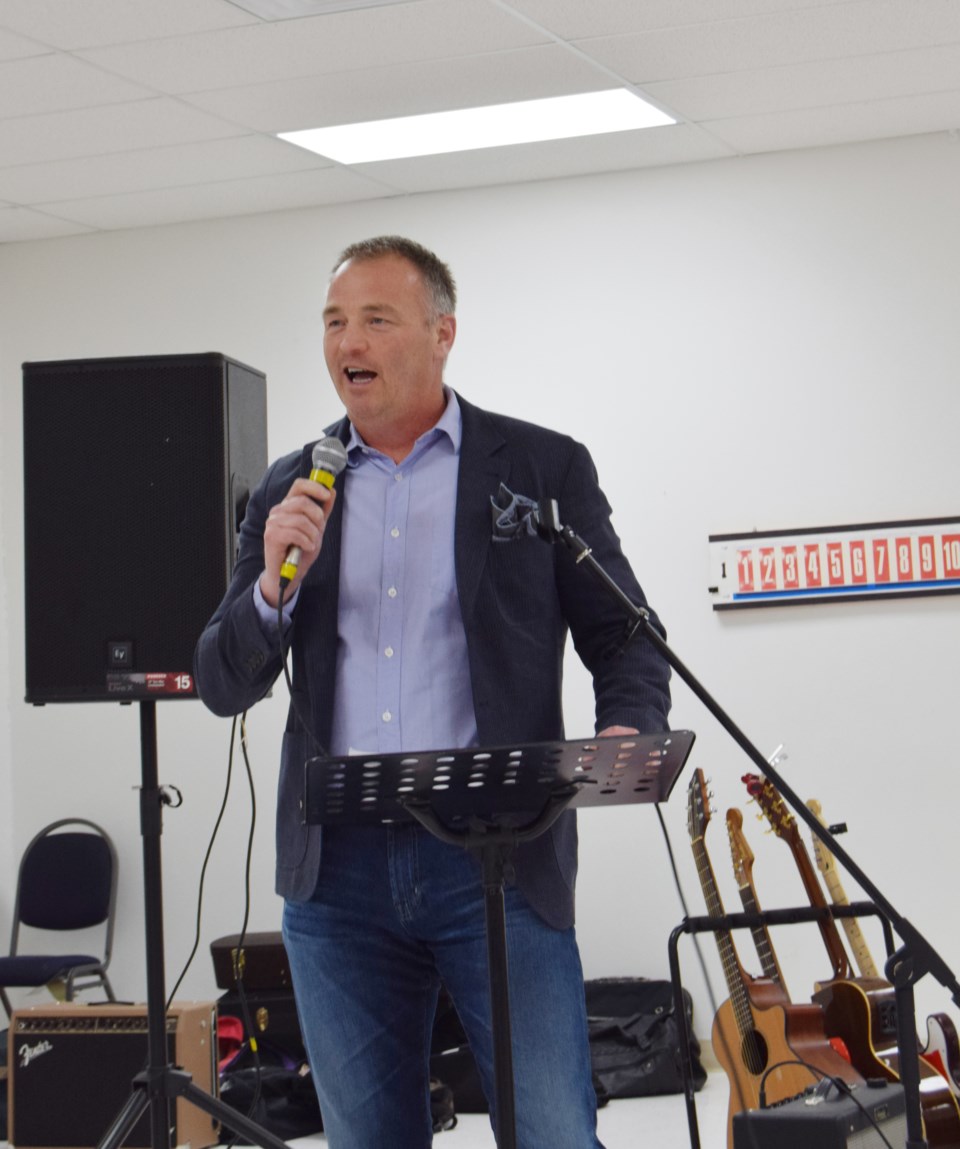BARRHEAD - By early 2022, Barrhead will only have about half of the family physicians it requires according to assessments carried out by Alberta Health Services (AHS).
That’s according to community medical director Dr. Kent Bernes, who spoke about the physician situation and the challenges facing local health care during the Barrhead and District Chamber of Commerce luncheon conducted over Zoom on Nov. 18.
Bernes has been practicing in Barrhead for nearly three decades and was given the Rural Health Professional Action Plan (RhPAP) 2021 Rhapsody Rural Physician Award earlier this year for his work in promoting rural medicine.
According to AHS’ assessments, Barrhead requires approximately 10 family physicians on hand, with a couple of GPAs and GPOs who can handle anethesia and obstetrics in that mix ideally.
Admittedly, those assessments are somewhat flawed since they are partially based on the number of referrals to other centres for service, Bernes said.
The reason Barrhead might refer patients onward due to risk factors like heart disease or severe brittle bone diabetes, so the numbers aren’t entirely accurate.
But 10 is still a pretty good figure to go with, and having that many physicians in the community would take some of the pressure off of the emergency department at the health care centre. (Bernes explained that people tend to go to the emergency room after-hours when they have difficulty getting an appointment.)
Barrhead has lost a couple of its physicians over the last couple of years and will be losing two more over the next couple of months, with one physician giving up his position at the end of November and another at the end of January.
That will leave a total of five family physician positions open, including a position for a GPA who can administer anethesia that has been open for three years.
Bernes noted that in order to offer obstetrics (ie. Services relating to the delivery of babies) at the Barrhead Healthcare Centre, they need to perform C-sections, which requires anethesia. (Incidentally, Barrhead handles approximately 150 deliveries each year.)
While they’ve been able to work around that issue by backfilling with locum (ie. temporary staff that come in for a couple of days at a time), that isn’t an ideal solution and that program, along with other surgical services offered at Barrhead, is “kind of in peril” as a result, he said.
Recruiting new physicians is itself a tricky issue. Bernes acknowledged that Canadian graduates are difficult to bring to the community; most family physicians will end up in the major urban areas or in the rural communities that are closest to where they undertook their education.
For instance, there is a rural program run through the University of Alberta, but it’s offered in Grande Prairie and Red Deer, and as a result, grads tend to stick closer to those centres.
Bernes said they have been working with the university to send Barrhead more residents as they feel that those students might return to the community as they finish their academic careers.
“Unfortunately, we haven’t had much luck with getting anybody to come, and the university hasn’t particularly supported it either,” he said.
As such, recruitment of new physicians mostly depends on bringing in people from outside of Canada.
Bernes said they currently have a married couple of two physicians from Nigeria that they contracted in the spring to come to Barrhead, but before they can start practice, they have to complete an assessment with the College of Physicians and Surgeons.
That assessment can take several months, and even though they were contracted in the spring, Bernes suggested that one of the physicians was only starting her assessment this week, while the other physician might not start until 2022.
“If everything goes smoothly, I’m anticipating that maybe in April, we may have them actually starting to work,” he said.
He said they also had another young lady from Nigeria make the trip to Barrhead with her husband on Nov. 16. In spite of the heavy snow that hit northern Alberta that day, they seemed quite enthused about the community.
But even if she is contracted soon to come to the community, she probably wouldn’t start practicing in Barrhead until Thanksgiving of 2022 due to the lengthy assessment process, which is complicated by a lack of assessors at the college.
So what, if anything, can the community or the Chamber of Commerce do to support recruitment of physicians?
Bernes said he has learned over the past couple of years that a lot of rural communities have initiatives to aid in recruitment, and Barrhead’s lack of such initiatives has even been highlighted by AHS as a potential issue.
For instance, he said he believes that Westlock offers new physicians a six to 12-month car lease and accommodations to new physicians. Other communities offer different incentives as well.
“Barrhead doesn’t have that,” he said.
When asked about retaining physicians, Bernes suggested that the reasons for physicians leaving the community was multi-factorial and not necessarily anything Barrhead could tackle.
For instance, one physician left simply because his wife practiced a certain type of law and was offered a position in Calgary.
The issue with small communities is the lack of available services; if a physician wants their child involved in specific sports that aren’t offered here, that might prompt them to leave.
How this affects the remaining physicians, Bernes said, is that it increases the possibility of burnout.
While they’ve done a reasonable job with scheduling doctors to cover the emergency room at Barrhead, it remains a challenge, and Bernes noted that December is looking grim in terms of spots on the schedule with large gaps (particularly around Christmas).
“So we may have some ‘service disruptions,’ as AHS calls them,” he said.



